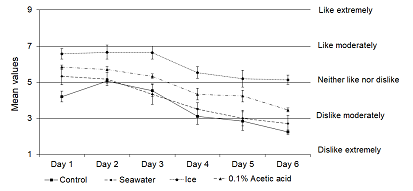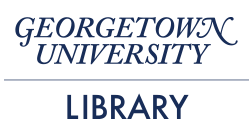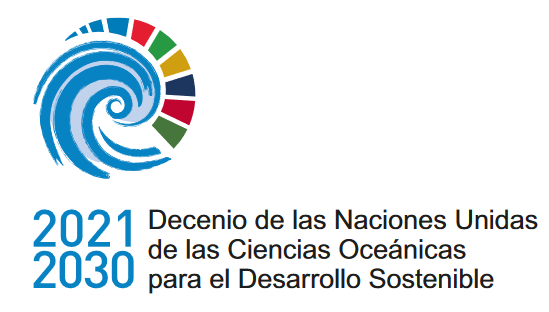Cambios en los parámetros de calidad y atributos sensoriales de la carne del pulpo colorado patagónico (Enteroctopus megalocyathus) bajo diferentes tratamientos poscosecha
DOI:
https://doi.org/10.47193/mafis.3742024010703Palabras clave:
Calidad poscaptura, pulpo, pesca artesanal, ácido acético, parámetros de calidad, atributos sensorialesResumen
Enteroctopus megalocyathus es un importante recurso comercial capturado por pesquerías de pequeña escala de Argentina y Chile, con acceso limitado a métodos de preservación con frío. En este sentido, el uso de métodos alternativos de conservación poscosecha podría ser útil para preservar la buena calidad del producto crudo. Se investigó el efecto de los tratamientos poscosecha mediante inmersión en agua de mar, hielo en escamas, ácido acético al 0,1% y un control en pulpo crudo durante el almacenamiento a 4 °C durante siete días. Bajo estos tratamientos, se evaluaron cambios en parámetros físicos, químicos, microbiológicos y atributos sensoriales. Los resultados mostraron que para el tratamiento control y agua de mar, el pulpo se volvió inaceptable al tercer día. Los tratamientos con hielo y ácido acético al 0,1% presentaron mejores parámetros de calidad física, química y microbiológica a lo largo de los días de almacenamiento. Con base en los atributos sensoriales, la carne de pulpo sumergida en ácido acético al 0,1% se mantuvo dentro de los límites de aceptabilidad hasta el quinto día, mientras que el tratamiento con hielo extendió la calidad inicial al menos durante siete días. Por tanto, el ácido acético al 0,1% podría ser un método económico y fácilmente aplicable durante el manejo poscosecha en la pesquería de E. megalocyathus.
Descargas
Métricas
Citas
Argentine Food Code. 2019. Capítulo VI. Alimentos carneos y afines. Art 247-Art 519. https://www.anmat.gob.ar/webanmat/normativas_alimentos.asp.
Aditi N, Deepak A. 2013. Artisanal octopus fishery: socio-economics and management. In: Venkataraman K, Sivaperuman C, Raghunathan C, editors. Ecology and conservation of tropical marine faunal communities. Berlin: Springer.
Antonacopoulos N, Vyncke W. 1989. Determination of volatile basic nitrogen in fish: a third collaborative study by the West European Fish Technologists’ Association (WEFTA). Z Lebensm Unters Forch. 189 (4): 309-316. DOI: https://doi.org/10.1007/BF01683206
[AOAC] Association of Official Analytical Chemists. 2010. Official methods of analysis of the Association of Official Analytical Chemists. 15th ed. Arlington: AOAC.
Arvanitoyannis IS, Tsitsika EV, Panagiotaki P. 2005. Implementation of quality control methods (physico-chemical, microbiological and sensory) in conjunction with multivariate analysis towards fish authenticity. Int J Food Sci Technol. 40 (3): 237-263. DOI: https://doi.org/10.1111/j.1365-2621.2004.00917.x
Arvanitoyannis IS, Varzakas TH. 2009. Application of ISO 22000 and comparison with HACCP on industrial processing of common octopus (Octopus vulgaris)-Part I. Int J Food Sci Technol. 44 (1): 58-78. DOI: https://doi.org/10.1111/j.1365-2621.2007.01666.x
Ashie INA, Smith JP, Simpson BK, Haard NF. 1996. Spoilage and shelf-life extension of fresh fish and shellfish. Crit Rev Food Sci Nutr. 36 (1-2): 87-121. DOI: https://doi.org/10.1080/10408399609527720
Atrea I, Papavergou A, Amvrosiadis I, Savvaidis IN. 2009. Combined effect of vacuum-packaging and oregano essential oil on the shelf-life of Mediterranean octopus (Octopus vulgaris) from the Aegean Sea stored at 4 °C. Food Microbiol. 26 (2): 166-172. DOI: https://doi.org/10.1016/j.fm.2008.10.005
Barbosa A, Vaz-Pires P. 2004. Quality index method (QIM): development of a sensorial scheme for common octopus (Octopus vulgaris). Food Control. 15: 161-168. DOI: https://doi.org/10.1016/S0956-7135(03)00027-6
Baxter SR, Skonberg DI. 2008. Gelation properties of previously cooked minced meat from Jonah crab (Cancer borealis) as affected by washing treatment and salt concentration. Food Chem. 109 (2): 332-339. DOI: https://doi.org/10.1016/j.foodchem.2007.12.044
Boyle P, Rodhouse P. 2005. Cephalopods: ecology and fisheries. Oxford: Blackwell Science.
Chong Lay-Son J, Cortés MN, Galleguillos R, Oyarzún CG. 2001. Estudio biológico pesquero del recurso pulpo en la X y XI regiones. FIP-IT 99-20. Concepción: Fondo de Investigación Pesquera.
Emery TJ, Hartmann K, Gardner C. 2016. Management issues and options for small-scale holobenthic octopus fisheries. Ocean Coast Manage. 120: 180-188. DOI: https://doi.org/10.1016/j.ocecoaman.2015.12.004
[FAO] Food and Agriculture Organization for the United Nations. 2018. The state of world fisheries and aquaculture 2018 - Meeting the sustainable development goals. Rome: FAO.
Graham J, Johnston WA, Nicholson FJ. 1993. Ice in fisheries. FAO Fish Tech Rep. 331.
Gram L, Huss HH. 1996. Microbiological spoilage of fish and fish products. Int J Food Microbiol. 33 (1): 121-137. DOI: https://doi.org/10.1016/0168-1605(96)01134-8
Gullian-Klanian M, Sánchez-Solís MJ, Terrats-Preciat M, Delgadillo-Díaz M, Aranda J. 2016. Quality indicators and shelf life of red octopus (Octopus maya) in chilling storage. Food Sci Technol. 36 (2): 304-312. DOI: http://doi.org/10.1590/1678-457X.0077
Gullian-Klanian M, Terrats-Preciat M, Pech-Jimenez EC, Ocampo JC. 2017. Effect of frozen storage on protein denaturation and fatty acids profile of the red octopus (Octopus maya). J Food Process Preserv. 41 (4): 1-11. DOI: https://doi.org/10.1111/jfpp.13072
Hurtado JL, Borderias J, Montero P, An H. 1999. Characterization of proteolytic activity in octopus (Octopus vulgaris) arm muscle. J Food Biochem. 23 (4): 469-483. DOI: https://doi.org/10.1111/j.1745-4514.1999.tb00031.x
Hurtado JL, Montero P, Borderías J, Solas M. 2001. High-pressure/temperature treatment effect on the characteristics of octopus (Octopus vulgaris) arm muscle. Eur Food Res Technol. 213 (1): 22-29. DOI: https://doi.org/10.1007/s002170100321
Huss HH. 1998. El pescado fresco: su calidad y cambios de su calidad. FAO Documento Técnico de Pesca. 348. Roma: FAO. 202 p.
[IFOP] Instituto de Fomento Pesquero 2010. Caracterización biológico pesquera de las actividades extractivas del recurso pulpo en la X Región. FIP 2008-40. Valparaíso: IFOP.
Jain D, Pathare PB. 2007. Study the drying kinetics of open sun drying of fish. J Food Eng. 78 (4): 1315-1319. DOI: https://doi.org/10.1016/j.jfoodeng.2005.12.044
Jinadasa BKK. 2014. Determination of quality of marine fishes based on total volatile base nitro-gen test (TVB-N). Nat Sci. 12: 106-111.
Kariya Y, Ochiai Y, Hashimoto K. 1986. Protein components and ultrastructure of the arm and mantle muscles of octopus Octopus vulgaris. Bull Japan Soc Sci Fish. 52 (1): 131-138. DOI: https://doi.org/10.2331/suisan.52.131
Kurita N, Koike S. 1982. Synergistic antimicrobial effect of acetic acid, sodium chloride and essential oil components. Agric Biol Chem. 46 (6): 1655-1660. DOI: https://doi.org/10.1080/00021369.1982.10865289
Lougovois VP, Kolovou MK, Savvaidis IN, Kontominas MG. 2008. Spoilage potential of ice-stored whole musky octopus (Eledone moschata). Int J Food Sci Technol. 43 (7): 1286-1294. DOI: https://doi.org/10.1111/j.1365-2621.2007.01607.x
Majumdar BC, Ahammad B, Kabir IE, Mollik JR, Baidya A, Hossain MF, Asadujjaman M, Roy TK, Paul SI. 2023. Sensorial, physicochemical and microbial quality evaluations of sun-dried marine fishes available in the Bay of Bengal of Bangladesh. Appl Food Res. 3 (2): 100369. DOI: https://doi.org/10.1016/j.afres.2023.100369
Manimaran U, Shakila RJ, Shalini R, Sivaraman B, Sumathi G, Selvaganapathi R, Jeyasekaran G. 2016. Effect of additives in the shelflife extension of chilled and frozen stored Indian octopus (Cistopus indicus). J. Food Sci Technol. 53 (2): 1348-1354. DOI: https://doi.org/10.1007/s13197-015-1930-0
Márquez-Ríos E, Morán-Palacio EF, Lugo-Sánchez ME, Ocaño-Higuera VM, Pacheco-Aguilar R. 2007. Postmortem biochemical behavior of giant squid (Dosidicus gigas) mantle muscle stored in ice and its relation with quality parameters. J Food Sci. 72 (7): 356-362. DOI: https://doi.org/10.1111/j.1750-3841.2007.00468.x
Messenger JB. 2001. Cephalopod chromatophores: neurobiology and natural history. Biol Rev Camb Philos Soc. 76 (4): 473-528. DOI: https://doi.org/10.1017/S1464793101005772
Mitsuda H, Nakajima K, Mizuno H, Kawai F. 1980. Use of sodium chloride solution and carbon dioxide for extending shelf-life of fish fillets. J Food Sci. 45 (3): 661-666. DOI: https://doi.org/10.1111/j.1365-2621.1980.tb04126.x
Mohan CO, Ravishankar CN, Lalitha KV, Gopal TS. 2012. Effect of chitosan edible coating on the quality of double filleted Indian oil sardine (Sardinella longiceps) during chilled storage. Food Hydrocoll. 26 (1): 167-174. DOI: https://doi.org/10.1016/j.foodhyd.2011.05.005
Mouritsen OG, Styrbæk K. 2018. Cephalopod gastronomy-a promise for the future. Front Commun. 3: 38. DOI: https://doi.org/10.3389/fcomm.2018.00038
Ocaño-Higuera VM, Maeda-Martínez AN, Marquez-Ríos E, Canizales-Rodríguez DF, Castillo-Yáñez FJ, Ruíz-Bustos E, Plascencia-Jatomea M. 2011. Freshness assessment of ray fish stored in ice by biochemical, chemical and physical methods. Food Chem. 125 (1): 49-54. DOI: https://doi.org/10.1016/j.foodchem.2010.08.034
Ohashi E, Okamoto M, Ozawa A, Fujita T. 1991. Characterisation of common squid using several freshness indicators. J Food Sci. 56: 161-163. DOI: https://doi.org/10.1111/j.1365-2621.1991.tb08001.x
Olsson GB, Seppola MA, Olsen RL. 2007. Water-holding capacity of wild and farmed cod (Gadus morhua) and haddock (Melanogrammus aeglefinus) muscle during ice storage. LWT Food Sci. Technol. 40 (5): 793-799. DOI: https://doi.org/10.1016/j.lwt.2006.04.004
Ortiz N, Ré ME. 2019. Intertidal fishery of the Patagonian red octopus Enteroctopus megalocyathus (Gould, 1852): reproductive status and catch composition in the North of San Jorge Gulf (Patagonian Atlantic Coast). J Shellfish Res. 38 (3): 619-627. DOI: https://doi.org/10.2983/035.038.0313
Ortiz N, Ré ME, Márquez F, Glembocki NG. 2011. The reproductive cycle of the red octopus Enteroctopus megalocyathus in fishing areas of Northern Patagonian coast. Fish. Res. 110 (1): 217-223. DOI: https://doi.org/10.1016/j.fishres.2011.03.016
Ozogul Y, Ayas D, Yazgan H, Ozogul F, Boga EK, Ozyurt G. 2010. The capability of rosemary extract in preventing oxidation of fish lipid. Int J Food Sci Technol. 45 (8): 1717-1723. DOI: https://doi.org/10.1111/j.1365-2621.2010.02326.x
Pacheco-Aguilar R, Márquez-Ríos E, Lugo-Sánchez ME, García-Sanchez G, Maeda-Martínez AN, Ocaño-Higuera VM. 2008. Postmortem changes in the adductor muscle of Pacific lions-paw scallop (Nodipecten subnodosus) during ice storage. Food Chem. 106 (1): 253-259. DOI: https://doi.org/10.1016/j.foodchem.2007.05.079
Paarup T, Sanchez JA, Moral A, Christensen H, Bisgaard GL. 2002. Sensory chemical and bacteriological changes during storage of iced squid (Todaropsis eblanae). J Appl Microbiol. 92 (5): 941-950. DOI: https://doi.org/10.1046/j.1365-2672.2002.01604.x
Pierce GJ, Portela J. 2014. Fisheries production and market demand. In: Iglesias J, Fuentes L, Villanueva R, editors. Cephalopod culture. New York: Springer Science and Business Media Dordrecht.
R Core Team. 2019. R: A language and environment for statistical computing. Vienna: R Foundation for Statistical Computing. https://www.R-project.org/.
Ré ME. 1998. Pesquerías de pulpos. In: Boschi EE, editor. El Mar Argentino y sus recursos pesqueros. Tomo 2. Los moluscos de interés pesquero. Cultivos y estrategias reproductivas de bivalvos y equinoideos. Mar del Plata: Instituto Nacional de Investigación y Desarrollo Pesquero (INIDEP). p. 99-114.
Sallam KI. 2007. Antimicrobial and antioxidant effects of sodium acetate, sodium lactate, and sodium citrate in refrigerated sliced salmon. Food Control. 18 (5): 566-575. DOI: https://doi.org/10.1016/j.foodcont.2006.02.002
Samples S. 2014. The effects of storage and preservation technologies on the quality of fish products: a review. J Food Process Preserv. 39: 1206-1215. DOI: https://doi.org/10.1111/jfpp.12337
Shalini, R, Shakila RJ, Jeyasekaran G, Jeevithan E. 2015. Sensory, biochemical and bacteriological properties of octopus (Cistopus indicus) stored in ice. J Food Sci Technol. 52: 6763-6769.
Shawyer M, Pizzali AFM. 2003. The use of ice on small fishing vessels. FAO Fish Tech Rep. 436.
Vaz-Pires P, Seixas P, Mota M, Lapa-Guimarães J, Pickova J, Lindo A, Silva T. 2008. Sensory, microbiological, physical and chemical properties of cuttlefish (Sepia officinalis) and broadtail shortfin squid (Illex coindetii) stored in ice. LWT Food Sci Technol. 41 (9): 1655-1664. DOI: https://doi.org/10.1016/j.lwt.2007.10.003
Yu Y, Tang M, Dai H, Feng X, Ma L, Zhang Y. 2022. Dominating roles of protein conformation and water migration in fish muscle quality: the effect of freshness and heating process. Food Chem. 388: 132881. DOI: https://doi.org/10.1016/j.foodchem.2022.132881
Zamuz S, Bohrer B M, Shariati MA, Rebezov M, Kumar M, Pateiro M, Lorenzo JM. (2023). Assessing the quality of octopus: from sea to table. Food Front. 4 (2): 733-749.
Zeng QZ, Thorarinsdottir KA, Olafsdottir G. 2005. Quality changes of shrimp (Pandalus borealis) stored under different cooling conditions. J Food Sci. 70 (7): 459-466. DOI: https://doi.org/10.1111/j.1365-2621.2005.tb11493.x

Descargas
Publicado
Cómo citar
Número
Sección
Licencia
Derechos de autor 2024 Jimena B. Dima , Martina V. Fiedorowicz Kowal, Jorge Castañeda, Nicolás Ortiz

Esta obra está bajo una licencia internacional Creative Commons Atribución-NoComercial-CompartirIgual 4.0.
Los autores de los artículos publicados en Marine and Fishery Sciences conservan los derechos de autor de sus artículos, a excepción de las imágenes de terceros y otros materiales añadidos por Marine and Fishery Sciences, que están sujetos a los derechos de autor de sus respectivos propietarios. Por lo tanto, los autores son libres de difundir y volver a publicar sus artículos, sujeto a los requisitos de los propietarios de derechos de autor de terceros y sujeto a que la publicación original sea completamente citada. Los visitantes también pueden descargar y reenviar artículos sujetos a los requisitos de citas. La capacidad de copiar, descargar, reenviar o distribuir cualquier material siempre está sujeta a los avisos de derechos de autor que se muestran. Los avisos de copyright deben mostrarse de manera prominente y no pueden borrarse, eliminarse u ocultarse, total o parcialmente. El autoalmacenamiento en servidores y repositorios de preimpresión está permitido para todas las versiones.
Esta revista ofrece a los autores una política de acceso abierto. Los usuarios pueden leer, descargar, copiar, distribuir, imprimir, buscar o vincular los textos completos de los artículos, o usarlos para cualquier otro propósito legal dentro de la licencia Creative Commons 4.0 (BY-NC-SA), sin solicitar permiso previo del editor o del autor. Esto está de acuerdo con la definición BOAI de acceso abierto.



























